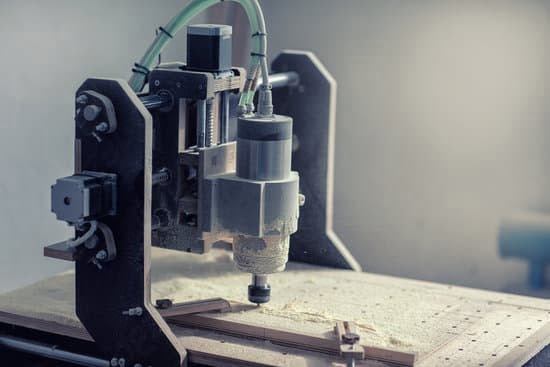Woodworking is a craft that demands precision and control. To achieve those qualities in your projects, you need the right tools, and one essential tool every woodworker should have is a woodworking vice. This device provides a secure grip on your workpiece, allowing you to carve, shape, and smooth with confidence. In this article, we will guide you through the process of fitting a woodworking vice to ensure maximum effectiveness in your workshop.
A woodworking vice is a clamping device specifically designed for woodworking tasks. It attaches to your workbench and holds your workpiece firmly in place while you manipulate it with various hand or power tools. Not only does a properly fitted vice provide stability, but it also enhances safety by minimizing movement during cutting or shaping operations.
Having a well-fitted woodworking vice is crucial for any woodworking project. It not only keeps your workpiece secure but also allows you to focus on the intricate details without worrying about slippage or wobbling. Whether you’re an experienced craftsman or just starting out in the world of woodwork, understanding how to fit and utilize this fundamental tool is essential for achieving professional-quality results.
So, let’s dive into the world of woodworking vices and explore the different types available in the market, how to select and install the ideal vice for your workspace, how to adjust and align it for precise control, as well as tips for maintaining its performance over time. By mastering the art of fitting a woodworking vice, you’ll enhance both your craftsmanship and enjoyment of this wonderful hobby.
Understanding the Different Types of Vices
When it comes to fitting a woodworking vice, it’s important to understand the different types available in the market. Each type of vice has its own advantages and disadvantages, and choosing the right one for your woodworking projects is essential.
Bench Vices:
- A bench vice is the most common type of woodworking vice and is typically mounted on top of a workbench.
- These vices have two jaws, one fixed and one movable, which can be tightened or released by turning a handle.
- Bench vices are versatile and suitable for various woodworking tasks such as sawing, planing, chiseling, and drilling.
Front Vices:
- Front vices, also known as face vices or shoulder vices, are mounted on the front edge of a workbench.
- These vices have a single jaw that extends vertically from the benchtop when in use.
- Front vices are particularly useful for holding large workpieces securely during heavy-duty operations.
Tail Vices:
- Tail vices are often found at the end of a workbench and provide support for longer pieces of wood.
- These vices feature a long sliding jaw that can be positioned anywhere along the length of the benchtop.
- The sliding jaw is operated using a screw mechanism located at the end of the bench.
Shoulder Vices:
- In contrast to tail vises, shoulder vises have their threaded metal bar located at inner space between jaws which eliminates fears over them breaking.
- This design also allows adjustment to fit different material types for better precision.
- Shoulder vises are usually built into or added onto the side of a workbench and allow great control over material hold and provides both horizontal and vertical adjustment.
Now that you have an understanding of the different types of woodworking vices available, you can choose the one that best suits your needs and projects. Consider factors such as the size and materials used in your woodworking tasks, as well as any additional features you may require. It’s also important to assess your workspace and determine which vice would fit best in terms of space availability and personal preferences.
To purchase a woodworking vice, there are several options available. You can visit local hardware stores or specialized woodworking supply stores. Online retailers also offer a wide range of vices to choose from. When purchasing, it’s crucial to look for high-quality products that will withstand heavy-duty use over time.
Selecting the Ideal Woodworking Vice for Your Workspace
Factors to consider when choosing a woodworking vice include size, materials, and features. The size of the vice should be appropriate for the projects you plan to undertake. A larger vice may be necessary for larger pieces of wood or more heavy-duty work, while a smaller vice may suffice for smaller projects.
Additionally, it is important to choose a vice made from high-quality materials that will withstand the rigors of woodworking tasks. Steel and cast iron are common materials used in woodworking vices due to their strength and durability.
Assessing your workspace is also crucial when selecting a woodworking vice. Consider the available space in your workshop and how much room you can allocate for the vice on your workbench. If space is limited, you may need to opt for a smaller or more compact vice that can still meet your project needs.
When it comes to features, think about what functionalities are important for your woodworking projects. Some vices may have additional features such as quick release mechanisms or built-in dog holes that enhance their versatility and convenience.
Once you have determined the specifications of the ideal woodworking vice for your workspace, it’s time to look for purchasing options. Woodworking supply stores, online retailers, and specialty tool shops are good places to start your search. When evaluating potential vices, pay attention to factors such as build quality, smooth operation of moving parts, and customer reviews.
| Factor | Considerations |
|---|---|
| Size | Determine appropriate size based on project requirements |
| Materials | Choose high-quality materials like steel or cast iron |
| Workspace | Assess available space for the vice on your workbench |
| Features | Consider functionalities such as quick release mechanisms or built-in dog holes |
| Purchasing | Evaluate build quality, smooth operation, and customer reviews when selecting a vendor |
Preparing Your Workbench for Installation
Before you can install a woodworking vice on your workbench, it is essential to ensure that the workbench is in good condition and ready to support the vice. A sturdy and level workbench is crucial for the proper functioning of the vice and for safely executing woodworking tasks. In this section, we will discuss the steps to evaluate and prepare your workbench for installing a woodworking vice.
The first step in preparing your workbench is to assess its condition. Check for any signs of damage or instability such as wobbling or loose joints. If there are any structural issues with the workbench, it is important to address them before proceeding with the installation of a woodworking vice. Reinforcing weak points and tightening loose joints will help create a stable foundation for the vice.
Next, gather the necessary tools and materials for preparing the workbench. You will need clamps, a drill, screws, and possibly some wooden blocks or shims depending on your specific situation. Clamps are useful for temporarily securing parts of the bench that may need reinforcement or adjustment during installation.
To reinforce your workbench, consider adding wooden blocks or shims between the benchtop and legs for additional stability. Place clamps securely across any loose areas to hold them tightly in position while you make adjustments or reinforce weak spots with screws.
Once you have reinforced your workbench, you can proceed with creating a suitable space for mounting the woodworking vice. Measure and mark where you want to position the vice on your bench, ensuring that it is aligned with your workspace needs and provides enough clearance for larger projects. Pre-drill holes if necessary before attaching the mounting brackets or screws provided by the manufacturer.
By taking these steps to prepare your workbench before installing a woodworking vice, you are setting yourself up for success in future projects. A well-prepared workbench will provide stability and ensure that your woodworking vice operates smoothly, allowing you to focus on your craftsmanship and achieve the best possible results.
Installing the Woodworking Vice on Your Workbench
Once you have selected the ideal woodworking vice for your workspace, it’s time to install it on your workbench. Proper installation is crucial to ensure stability and functionality during woodworking projects. Follow these step-by-step instructions to make sure your woodworking vice is securely fixed:
- Positioning the Vice: Determine where on the workbench you want to install the vice. Ideally, it should be positioned towards one end of the bench, with enough space for holding your workpieces. Place the vice face down on the bench and mark its position using a pencil or marker.
- Drilling Pilot Holes: Using a drill and appropriate drill bit size, drill pilot holes in the marked positions on the workbench. These pilot holes will guide you when attaching the vice to the bench.
- Attaching Mounting Brackets: Attach the mounting brackets that came with your vice onto the underside of your workbench, aligning them with the pilot holes you just drilled. Make sure they are snugly fitted.
- Screwing in Securely: Flip over your woodworking vice so that it is right side up. Carefully place it over the mounting brackets and align it with the pilot holes on top of your workbench. Insert screws through these holes and tighten them securely into place using a screwdriver or wrench.
It’s important to note that different vices may have slightly different installation processes, so always refer to the manufacturer’s instructions for specific details.
To ensure that your woodworking vice is able to handle heavy-duty tasks without any issues, double-check that it is securely fixed to withstand pressure and force. Give it a few test runs with some scrap wood before working on important projects.
By following these installation steps, you’ll be on your way to having a properly fitted woodworking vice that will greatly enhance your woodworking experience. Once installed, you can begin utilizing the vice for various projects and tasks with confidence.
Adjusting and Aligning the Vice for Maximum Precision
Once you have successfully installed your woodworking vice onto your workbench, the next step is to properly adjust and align it for maximum precision. This will ensure that the jaws provide a secure grip on your workpiece, allowing you to execute your woodworking tasks with accuracy and control. Here are some steps to help you adjust and align your vice effectively.
Adjusting the Jaws
To begin, open the jaws of your woodworking vice and examine their alignment. The jaws should meet evenly in a parallel position, without any gaps or misalignment between them. If you find that the jaws aren’t aligned properly, adjustments can be made using the built-in mechanisms provided by most woodworking vices.
Using a combination square or an accurately straightened board, check if both jaws are perpendicular to the workbench surface. If they are not, use an appropriate wrench or screwdriver to loosen the jaw’s adjustment screws or bolts. Gently tap or adjust each jaw until they are parallel and perpendicular to the workbench surface.
When tightening the adjustment screws or bolts again, do so gradually while checking for alignment at each step. Avoid overtightening as this may cause unnecessary stress on the vice components or misalignments.
Aligning with Clamp Support
An alternative method for aligning your woodworking vice is by utilizing clamp support during adjustment. Start by attaching long clamps horizontally across both jaws of the vice, securing them tightly against one another. This extra support will allow you to apply pressure equally from both sides when aligning.
With clamp support in place, slightly loosen any locking screws or bolts present on your vice’s mechanism to enable slight movement for alignment purposes. Use a mallet or hammer to gently tap either side of the jaw until they are aligned correctly along their entire length.
Recheck and make additional adjustments as necessary, ensuring that the jaws are parallel and perpendicular to the workbench surface. Once you are satisfied with the alignment, tighten all screws or bolts securely to lock your woodworking vice in place.
Fine-Tuning for Smooth Operation
To ensure smooth operation of your woodworking vice, it is essential to make fine adjustments. This involves lubricating any moving parts such as the screws, handles, and guide bars with an appropriate lubricant. Regular maintenance will prevent rusting and reduce friction, enabling smoother movement of the vice components.
During operation, pay attention to any resistance or binding in the vice’s mechanism. If you notice any such issues, double-check your alignment and adjust accordingly. The goal is to create a smoothly functioning vice that provides optimal grip without any hindrances.
By properly adjusting and aligning your woodworking vice, you can achieve maximum precision in your projects. Taking the time to align your vice ensures your workpiece remains secure and accurately positioned during woodworking tasks, leading to excellent craftsmanship every time.
Utilizing the Woodworking Vice in Different Projects
Once you have successfully installed a woodworking vice on your workbench, you can begin exploring the various projects where it can be effectively utilized. The vice serves as a versatile tool that can greatly enhance your woodworking skills and precision. In this section, we will discuss some practical tips and techniques for using the vice in different tasks such as sawing, chiseling, planing, and drilling.
Using the Woodworking Vice for Sawing
The woodworking vice provides a secure grip on materials, making it an ideal tool for sawing. To effectively use the vice for this task, position your workpiece between the jaws of the vice with it protruding slightly above the top surface of the bench. This will ensure that you have enough clearance to cut without hitting the bench. Tighten the jaws securely to hold your workpiece in place before starting the sawing process.
Chiseling and Planing with a Woodworking Vice
When it comes to chiseling and planing, having a well-fitted woodworking vice is essential for achieving accurate results. Place your workpiece perpendicular to the bench so that one end is held securely by the vice while leaving enough room for maneuvering your chisel or plane.
Adjust the jaw pressure according to your needs – heavier pressure may be required for tougher woods while lighter pressure is suitable for delicate or fragile materials. Make sure to always keep your hands away from where you are cutting or planing to avoid any accidents.
Drilling with Your Woodworking Vice
The woodworking vice also comes in handy when drilling holes into wood or other materials. Begin by securing your workpiece firmly between the jaws of the vice, ensuring that it is aligned properly with where you want to make your hole. Use clamps if necessary to provide additional stability during drilling.
It is important to take your time and apply steady pressure while drilling to ensure a clean and accurate hole. The vice will prevent any movement of the workpiece, allowing you to drill with confidence.
Safety Precautions when Using the Vice
While the woodworking vice is a valuable tool in enhancing your woodworking projects, it is crucial to prioritize safety. Always wear safety goggles to protect your eyes from flying debris, and consider wearing ear protection if using power tools.
When using sharp tools such as chisels or saws, be mindful of your hand placement and keep your fingers away from the cutting edge. Additionally, never force a tool or material against the vice or exert excessive pressure as this may damage both the workpiece and the vice.
By utilizing your woodworking vice properly in different projects, you can achieve precise cuts, smooth planing, accurate drilling, and overall excellent craftsmanship. Remember to experiment with various techniques and explore new possibilities as you gain experience with your vice. In the next section, we will discuss some essential maintenance tips to keep your woodworking vice in top-notch condition for years to come.
Maintaining and Caring for Your Woodworking Vice
Once you have successfully installed your woodworking vice, it is important to properly maintain and care for it to ensure its longevity and optimal performance. Regular maintenance will not only keep your vice in good working condition but also contribute to the quality of your woodworking projects. Here are some essential tips on how to maintain and care for your woodworking vice.
Firstly, it is important to regularly clean your woodworking vice. Sawdust and debris can accumulate in the jaws, causing them to become less effective in gripping. Use a soft brush or compressed air to remove any debris from the jaws and other components of the vice. Additionally, wipe down the surface of the vice with a clean cloth after each use to remove any sawdust or dirt.
In addition to cleaning, lubricating the moving parts of the vice is crucial for smooth operation. Apply a small amount of lubricant, such as oil or silicone spray, to the screws, handles, and other moving parts of the vice. This will help prevent rusting and ensure that the vice operates smoothly. Be careful not to apply too much lubricant, as excess oil can attract sawdust and debris.
Regular inspection is also important in maintaining your woodworking vice. Check for any signs of wear or damage such as cracks or loose screws. If any issues are detected, address them promptly by tightening screws or replacing worn-out parts. It is recommended to refer to the manufacturer’s instructions for specific maintenance recommendations as different vices may require different care.
Lastly, storing your woodworking vice properly when not in use will help extend its lifespan. Make sure that it is stored in a dry area away from moisture or extreme temperatures that could cause rusting or warping. If possible, cover the jaws with protective caps or a piece of scrap wood to prevent damage while in storage.
By following these maintenance tips and caring for your woodworking vice properly, you can ensure that it remains a reliable tool for your woodworking projects for years to come. With regular cleaning, lubrication, inspection, and proper storage, you can maintain the performance and functionality of your vice, resulting in excellent craftsmanship in all your woodworking endeavors.
Conclusion
In conclusion, fitting a woodworking vice is an essential skill for anyone involved in woodworking projects. A properly fitted vice not only provides a secure grip on the workpiece but also ensures precision and accuracy in your craftsmanship.
Throughout this article, we have explored the different types of vices available, discussed how to select the ideal vice for your workspace, and provided step-by-step instructions on preparing your workbench and installing the vice. We have also delved into adjusting and aligning the vice for maximum precision, utilizing it effectively in various projects, and maintaining its longevity.
By mastering the art of fitting a woodworking vice, you will have a valuable tool that enhances your woodworking experience. The knowledge gained from this article empowers you to select the right type of vice based on your project requirements and make appropriate adjustments to ensure smooth operation.
A well-fitted vice not only increases efficiency but also safeguards against accidents by securely holding the workpiece. It is crucial to follow safety precautions while using the vice and develop good maintenance habits to keep it in optimal condition for years to come.
Investing in a high-quality woodworking vice is an investment in excellent craftsmanship. From sawing, chiseling, planing, or drilling tasks, a well-fitted vice will be your trusted companion throughout each project. Remember to consult manufacturer’s instructions whenever necessary and don’t hesitate to seek professional help if troubleshooting becomes overwhelming. With this newfound knowledge and confidence in fitting your woodworking vice properly, you are ready to embark on new projects with precision and expertise. Happy woodworking.
Frequently Asked Questions
How do you mount woodwork vice?
Mounting a woodworking vice requires careful preparation and attention to detail. Start by selecting a suitable workspace, ideally a sturdy workbench that can handle the weight and pressure exerted during woodworking tasks. Place the vice in the desired position, ensuring that it is aligned parallel to the work surface for efficient operation. Mark the mounting holes on the bench through the pre-drilled holes in the vice’s base.
Then, remove the vice from the bench and drill pilot holes at each marked location using an appropriately sized drill bit. Next, position the vice back onto the bench and insert screws through the base holes into the pilot holes. Tighten them securely but avoid over-tightening, as it may cause damage or uneven movement when operating the vice.
Where do you mount woodworking vice?
Woodworking vices are typically mounted on a workbench since they need a stable surface to function effectively. The exact placement of the vice depends on personal preference and specific woodworking needs.
However, it is commonly recommended to mount it toward one end of the bench, allowing ample space for larger workpieces while still providing adequate support during clamping operations. The location should also consider factors such as accessibility and proximity to other tools or workstations for convenience during woodworking projects.
How should a vice be mounted?
When mounting a vice, proper installation is crucial to ensure stability and optimal functionality. First, make sure that you have chosen an appropriate mounting spot on your workbench or chosen surface where you plan to attach your vice securely. It’s essential to align the vice parallel to the edge of your working area or any designated reference lines if required for accurate clamping tasks.
Take careful measurements and mark out hole locations before drilling pilot holes for securing screws or bolts. Ensure that these fasteners are tight enough to hold firmly but not excessively so that they cause distortion or stress on surrounding materials when tightening or releasing items within the vice jaws. Regular maintenance and periodic checks of your mounted vice will help ensure its continued smooth operation and reliability.

Hi everyone! I’m a woodworker and blogger, and this is my woodworking blog. In my blog, I share tips and tricks for woodworkers of all skill levels, as well as project ideas that you can try yourself.





